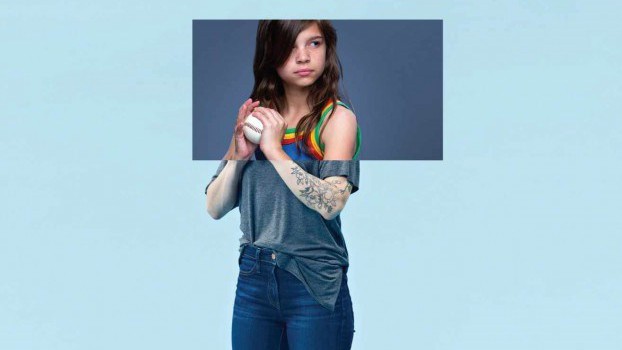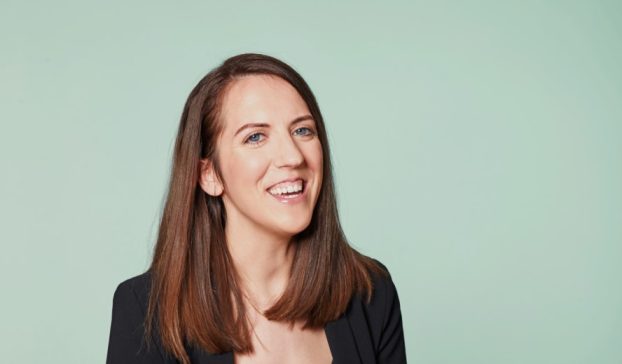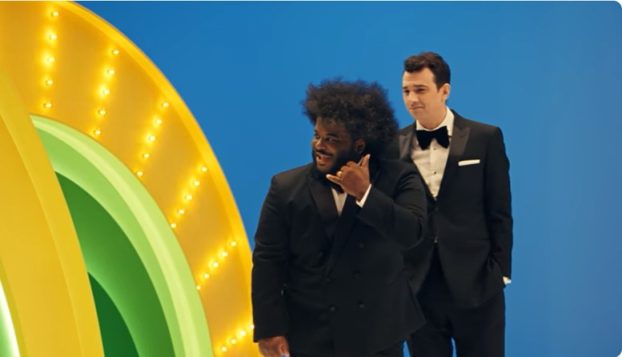Looking at Taxi over the past year, it seems that change is the only constant. The departure of Zak Mroueh was followed by a reshuffling that saw CD Steve Mykolyn fill his shoes, Taxi Content’s Daniel Rabinowicz move to New York to replace outgoing president John Berg and Canadian prez Rob Guenette named overall CEO.
‘Paul [Lavoie, chairman and CCO] likes to say we’re in show business – he’s responsible for the show and I’m responsible for the business,’ explains Guenette, who says Taxi’s flat organizational structure – with five GMs reporting to him – is what ensures consistency and strong oversight.
Since its inception, Taxi has placed on the AOY podium eight times, including a record five gold wins. Now that the house is in order in North America, Guenette is looking to Europe in the hopes of establishing a home in Amsterdam or London. ‘We always have one foot firmly planted in today and one foot forward,’ he says, adding that the successful move into New York has given him confidence. ‘The goal, ultimately, is to be a global agency. We love being independent, and we don’t see why we couldn’t achieve global standing in our sector.’
Expansion during a time of global economic uncertainty might seem brash (to put it mildly), but Guenette isn’t worried. ‘Taxi has its roots in the recession – it was founded in 1992,’ he says. ‘It’s made us smarter, keeps us lean. There is no fat on Taxi.’
He’s referring to the financial and work ethics that have earned Taxi a place on Deloitte’s 50 Best Managed Companies in Canada list for two years running, but you’d be forgiven for thinking of Koodo, Taxi’s latest home run for longtime client Telus. The campaign stretched beyond mass advertising to streamline everything from the on-hold music on customer service lines to shopping bags and mall kiosks. Although Guenette points out that design has been ‘part of our genetic code’ since the beginning, the recent renaissance can be traced to ECD Steve Mykolyn – also the mind behind 15 Below – who has a strong design background. ‘He is one of the original 360-degree thinkers,’ says Guenette. ‘The world is changing, and there are more stories to tell in more places.’
VITAL STATS
Home gym: Toronto (x2),Montreal, Vancouver, Calgary, New York
Entourage: 360 deep
Season highlights: New business wins from Koodo, The Weather Network, Toronto FC, Parkinson Society, Harlequin, Dasani Essentials, Fanta, Powerade, Vancouver Aquarium, Bombardier Aerospace and Groupe Germain (Alt and Le Germain Hotels). The 15 Below project won at D&AD, ADC, the One Show and in the Design category at Cannes; Mini snagged a Gold Lion at Cannes
Defeats: Lost Eska business to Zig
Management moves: Steve Mykolyn stepped in for former ECD Zak Mroueh; Daniel Rabinowicz replaced John Berg as president in New York. Gary Westgate, former CD at Toronto agency ACLC, moved into Ron Smrczek’s chair after Smrczek left for NYC to take over for ECD Wayne Best, while Taxi Canada prez Rob Guenette was promoted to North American CEO
Training regimen: No silos – art directors mix with designers and ad writers – and no fighting for budgets, as P&Ls are all in one place
Licensing and merchandising: European expansion in the works this fall; closer to home, a full-service Taxi Cafe is slated to open to the public in the Taxi 2 building next month, complete with branded coffee and t-shirts designed by Taxi staff
THE 15 BELOW PROJECT
Taxi marked its 15th birthday with an internal challenge to produce something that would give back to the community at large. The winning idea, which evolved from the cold weather alerts issued when the temperature drops to -15º C, was a way to help get the estimated 300,000 people living on Canadian streets out of the cold.
Out of this came the 15 Below jacket, a wind-, fire- and rainproof coat. Designed in collaboration with fashion designer Lida Baday, it’s lined with 15 pockets which can be stuffed with newsprint to provide adjustable layers of insulation for all weather. To test the effectiveness of newspaper as an insulator, Taxi ECD Steve Mykolyn spent eight hours in a freezer facility wearing the stuffed coat at temperatures as low as -30º. When it’s not being worn, it can be folded into a large back pocket, or used as a pillow or backpack.
A public website, 15belowproject.org, introduced the project and tracked its progress. Word of mouth spread quickly, and the 15 Below jacket was soon featured on television and radio news programs, as well as in the blogosphere.
However, the most important result is the number of homeless people who will be helped. In this sense, the biggest challenge was distribution. Taxi partnered with the Salvation Army to distribute 3,000 coats to shelters across Canada. A poster, printed on newsprint, included instructions on using the coat and could itself be ripped up and used as stuffing. Taxi donated the $10,000 prize the jacket won via the Corbis Creativity for Social Justice Award to the Salvation Army to help fund distribution.
This month, an online auction featuring 15 jackets autographed by celebrities including REM, Robert Plant, Isabella Rossellini, Rush and others will raise money for a second manufacturing run.
AVIVA CANADA
Few consumer categories create as much antipathy as insurance. People perceive it as a grudge purchase, and see their premiums as lost money – hardly the sort of scenario that breeds leadership brands. Aviva wanted to ‘shake up the sleepy category’ and redefine the relationship to operate on the customer’s terms. The challenge to Taxi: deliver a message to a jaded audience, not to change its mind overnight, but to lay the ground for change – both in the way Aviva would approach the service it offers and in how customers would come to feel about the company.
Research found a second and equally important insight: for people to be more open to communication about Aviva’s products and services, a mea culpa was required.
Through humour and a forthright spokesman, the introductory creative tapped into Canadians’ latent dissatisfaction with their insurance providers. The television component depicts ordinary people who give insurance brokers a taste of their own medicine (think shark feed).
Additional media delivered on more targeted objectives. Drive-time radio and OOH reached drivers during rush hour, often an unpleasant experience in itself. A microsite (changeinsurance.ca) ran visitors through a gauntlet of frustrations, but also allowed them to share their thoughts on how insurance could be improved. And to generate awareness among employees, an internal communication program was launched that included posters, signage, postcards and a tongue-in-cheek puppy screensaver.
Within a single month, the campaign achieved 45% awareness, along with a 300% increase in aided brand awareness. And as a demonstration of the chord the campaign struck with Canadians, Aviva received thousands of suggestions from consumers on how to change insurance for the better.
BOMBARDIER
Bombardier found itself the target of negative media due to the transfer of jobs to other countries, union pressures and other issues. The company needed to regain control of its corporate image, better leverage its reputation and turn itself into a brand that the Canadian public and key opinion leaders would embrace.
A further challenge was that most Canadian consumers think of Bombardier as ‘the snowmobile company’ and don’t interact with the brand’s trains or planes as they do with day-to-day consumer products. Taxi needed a natural connection to link Canadians to products they don’t really experience. The answer: Canadian pride, the most common and positive thing that connects Bombardier and Canadians.
Ironically, Taxi found the trigger for this emotion not at home but elsewhere: Canadian pride is at its highest when Canada performs on the international stage. Based on this insight, the campaign is a portrait of the Canadian spirit abroad. One television ad shows Bombardier trains winding their way through the countryside and the lives of people in China; another takes a plane through Morocco. A third spot, which aired during the Beijing Olympics, featured people from around the world embracing a little bit of Canada during the Games. Rounding out the campaign was a series of print ads showing stylized renderings of Bombardier trains and planes on stamps – a classic symbol of travel.
Media platforms coincided with Canadians performing well on the international stage, evoking Canadian pride and engaging emotionally with the audience, which in turn worked to increase Canadians’ support for and pride about Bombardier. In less than a year, tracking showed double-digit growth in positive brand attributes among both opinion leaders and the general public.
KOODO
The appetite for wireless has grown substantially since the wide-scale launch of mobile phones over a decade ago. While existing mobile operators developed their businesses through enriched features, Telus saw room for a new brand with a new approach to reach value-driven consumers. Taxi’s marching orders were to create a mobility brand unlike any other, with the objective of dominating the value segment.
To achieve this goal, the agency created a wholly integrated brand committed to a singular idea whose strong appeal to one target group risked being lost on others. Taxi identified Generation Y as the group that represented the greatest potential for the brand among the value segment. Their irreverent sense of humour and desire for a high-value brand, combined with the stripped-down appeal of the offering, led to the advertising proposition of ‘fat-free mobility,’ and from there to the campaign idea.
Playing off the retro appeal of the ’80s and The 20-Minute Workout in particular, the warm-up phase was a two-week tease to seed the brand via its vibrant colours, and to hint at the workout to come.
For the full-force launch, Canada’s major cities were swarmed by Spandex-clad men and women dubbed ‘Koodocizers’ working out on billboards, buses, television and other ambient environments. Consumers were encouraged to ‘flatten system access fees,’ ‘reduce bill bulge’ and check out ‘the cure for that mobility muffin top.’
The agency created the Koodo brand from inception to launch, carrying the campaign idea through into packaging, the retail environment, the website (koodomobile.com) and even a fake infomercial done in true ’80s style.
PALADIN LABS
For years, the morning after pill has been an important but underused emergency contraception (EC) option to prevent unwanted pregnancy. Research showed that while 85% of women were aware of EC and 70% have had unprotected sex, only 30% take action to obtain EC. Taxi set out to make young women aware of Paladin Labs’ Plan B product, its accessibility and the role it could play in their lives.
The unique viewpoint of the target audience was Taxi’s source of insight. A young, sexually active woman in her early 20s, she grew up surrounded by an open attitude towards sex, and has been socialized to believe that there is a way out of just about anything. This led Taxi directly to the core campaign idea: ‘oops’ happens, and when it does, there’s Plan B.
The creative format was ‘The___Pill,’ leaving space for women to fill in the blank with their own sexual ‘oops.’ Women were targeted at bars, clubs, college and university campuses and music festivals with posters, backlits and even disposable underwear. Digital screens let women share their oopses by text message, and fitting rooms in clothing stores featured boards with fill-in-the-blank sticky notes. The risky sex lines they submitted were compiled live and sent directly to a microsite, shareyouroops.ca, where users could share and vote on submissions.
In just six months, sales increased by 19%, complemented by a 59% increase in unaided awareness for Plan B. The target group got involved: 7,358 lines were generated and shared, over 40,000 votes were cast and 28% of all visitors to the website clicked through to planb.ca for more information.
Jump to:
Intro























